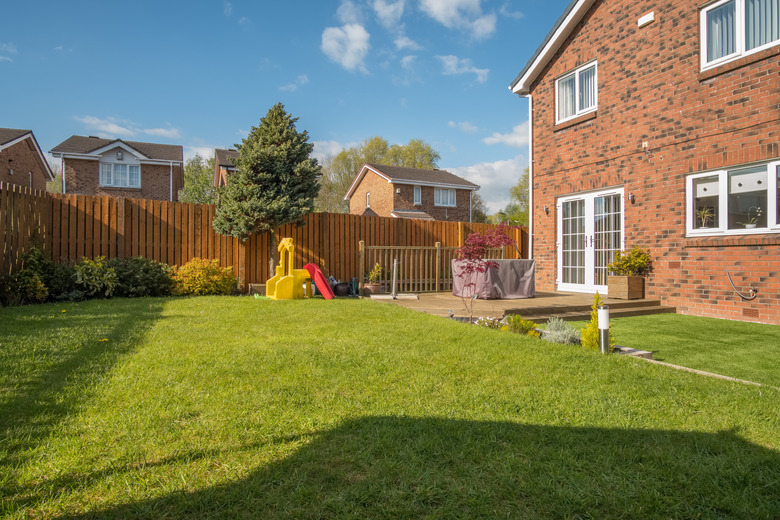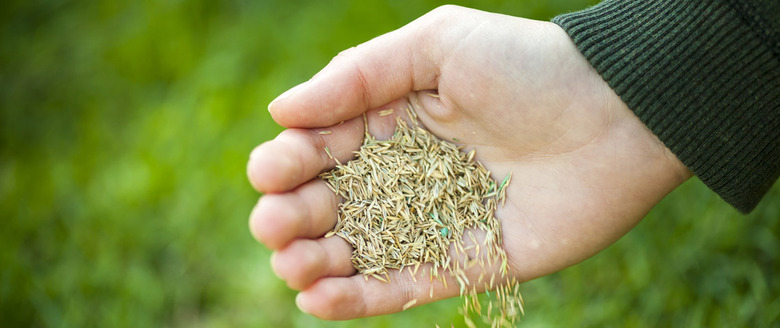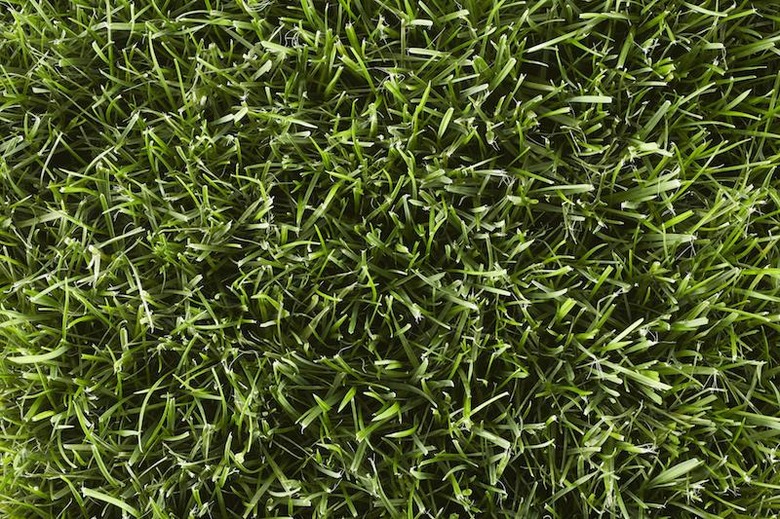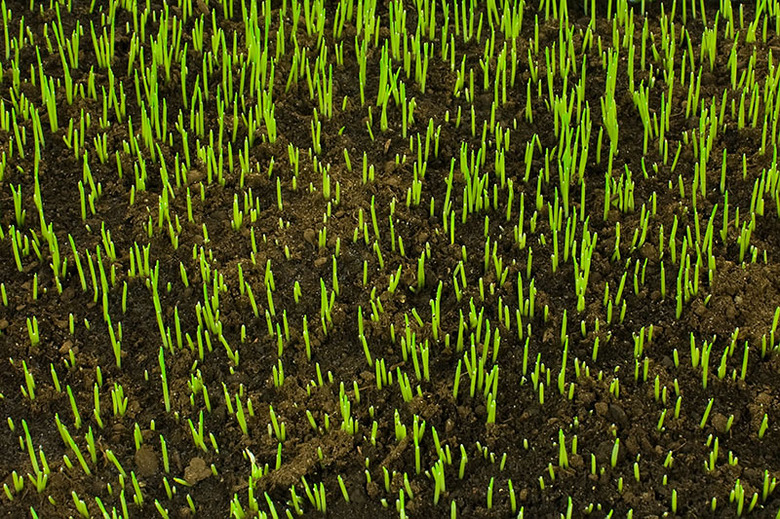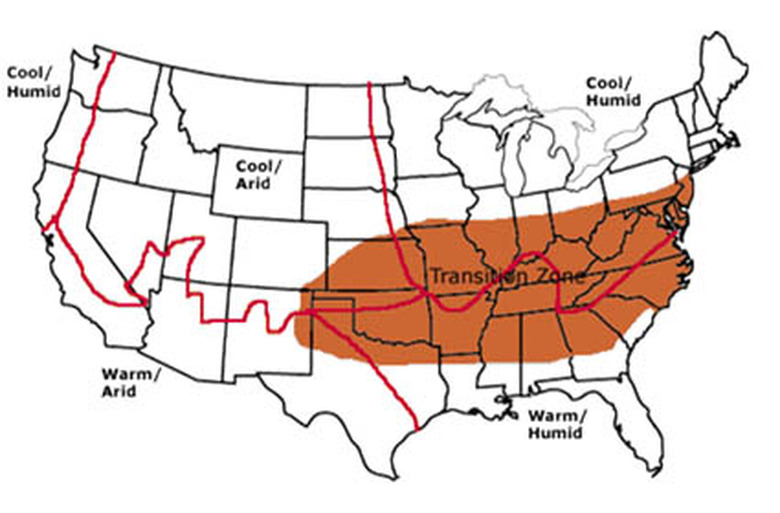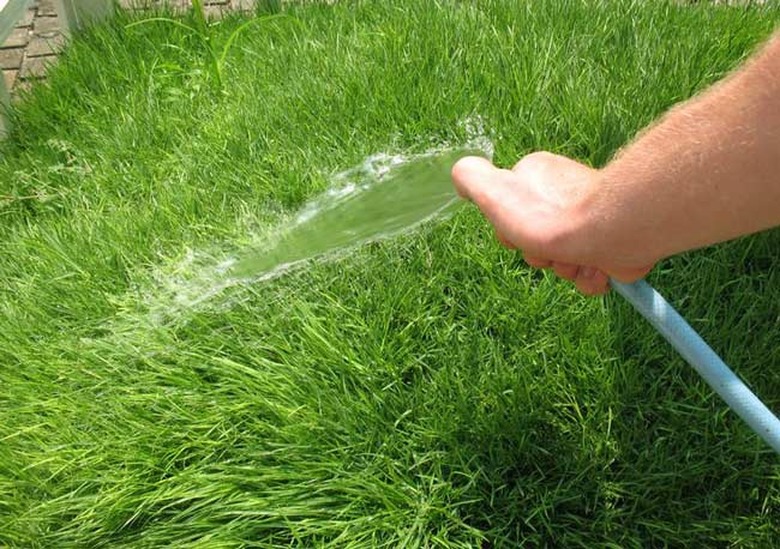When To Plant Grass Seed
To everything there is a season, and that's especially true for planting grass seed. When you sow grass at the optimum time of year, the soil is just the right temperature for germination and the weather conditions ideal for the sprouting shoots. That optimum time depends on the type of seed you plant, and that depends on the local climate.
The best times to plant in most parts of the United States are early fall in the cool-season northern part of the country and early spring for the warm-season southern climates. This isn't to say you can't plant a lawn at other times of the year. As long as you carefully prepare the soil and can nurture the young grass to maturity before the first frost, you can get great results at almost any time during the growing season.
Cool- and Warm-Season Grasses
Cool- and Warm-Season Grasses
Of the twelve or so grass species that grow in North America, about half prefer the cool weather typical in the northern part of the country while the other half prefer the warmth of the south. To take advantage of the strengths and weaknesses of different grass varieties, seed suppliers offer cool- or warm-season mixtures. Cool-season grasses include:
- Bent grass
- Fine fescue
- Tall fescue
- Kentucky bluegrass
- Ryegrass
Warm-season grasses include:
- Bermuda grass
- Centipede grass
- St. Augustine grass
- Zoysia grass
- Buffalo grass
Cool-season grasses prefer temperatures between 60 to 80 degrees Fahrenheit, whereas the warm-season varieties thrive when the thermometer hovers between 75 and 90 degrees. You can plant warm-season grasses in cool climates and vice versa, but if you do, be prepared to give the lawn extra care and to re-seed after a particularly extreme period of hot or cold weather.
Warm-Season/Early Spring, Cool-Season/Early Autumn
Warm-Season/Early Spring, Cool-Season/Early Autumn
Warm-season grasses germinate best when the soil temperature is around 70 degrees Fahrenheit, which roughly corresponds to an atmospheric temperature of 80 degrees. These temperatures tend to occur in late spring/early summer, which is a time when the soil retains some winter moisture, but not enough to rot the seeds or inhibit germination. In southern states, where warm-season grasses, such as Zoysia and St. Augustine, are most appropriate, prime-time for planting is from mid-April to early June.
Cool-season grasses are best planted in the fall, when the soil is still warm and the moderately cool temperatures promote fast germination. They need an ambient soil temperature between 50 and 65 degrees, which roughly corresponds to an air temperature between 60 and 75 degrees. Planting should occur at least 45 days before the first frost, which means the planting season is earlier the farther north you live. Mid-August to early September is best in the Upper Midwest, whereas in the central part of the country, you can usually wait until late September and October.
Know Your Planting Zone
Know Your Planting Zone
The main factor that determines optimal planting time isn't the region in which you live but the type of grass you're planting. Location helps determine the best type of grass to plant, though, so in a way, there is a connection between location and planting time. The United States National Arboretum divides the U.S. into four discrete planting areas and a large transitional zone in the middle of the country. Some states contain more than one zone, and California and Texas each contain three.
- The cool/humid zone is found in the Pacific Northwest and the Northeast states from Minnesota to Maine an as far south as Kentucky. Some of the best grasses for these zones are bluegrass and fescue, which should be planted in the fall.
- The cool/arid zone encompasses the area west of the Cascades to the Dakota borders and south to the Oklahoma panhandle. Cool-season grasses grow well there, as do some warm-season grasses, as long as they are well irrigated. Plant cool-season grasses in the fall and warm-season grasses in the spring.
- The warm/arid zone comprise most of the Southwest. Warm-season grasses that do best with spring planting, such as Buffalo grass, are popular here.
- The warm/humid zone is found around the coast of the Gulf of Mexico. Bermuda grass, which another warm-season grass that calls for spring planting, thrives here.
- No type of grass is perfectly adapted for the transition zone, which stretches from the Atlantic coast to Texas and from southern Iowa to northern Louisiana. People often plant mixtures of cool-season and warm-season grasses in this zone to take advantage of the strengths of both types. When doing this, it's a good idea to plant the warm-season varieties in the spring and the cool-season strains in the fall.
Overall, Fall Is the Best Planting Season
Overall, Fall Is the Best Planting Season
Early fall and early spring are the best times to plant grass seed in most areas of the country, but there is a problem with planting in the spring. That's when weed growth is most vigorous, and the weeds are sure to compete with the vulnerable, freshly sown grass. In the fall, however, most weeds are dead.
A few other factors mitigate against spring planting and favor fall:
- During spring, the hot days of summer are still ahead, and any grass that hasn't become established can get scorched.
- Residual moisture from the winter rains and the spring thaw can cause seed rot. In the fall, the soil is drier, and you have more control over the moisture content.
- Lawn fungus and other diseases tend to run rampant in the spring. By fall, you've either controlled them, or the pathogens that cause them go dormant.
It's true that warm-season grasses require warmer soil, but if you live in a region in which warm-season grasses grow best, there may not be a significant difference between soil temperature in the fall and spring. If so, consider planting in the fall.
